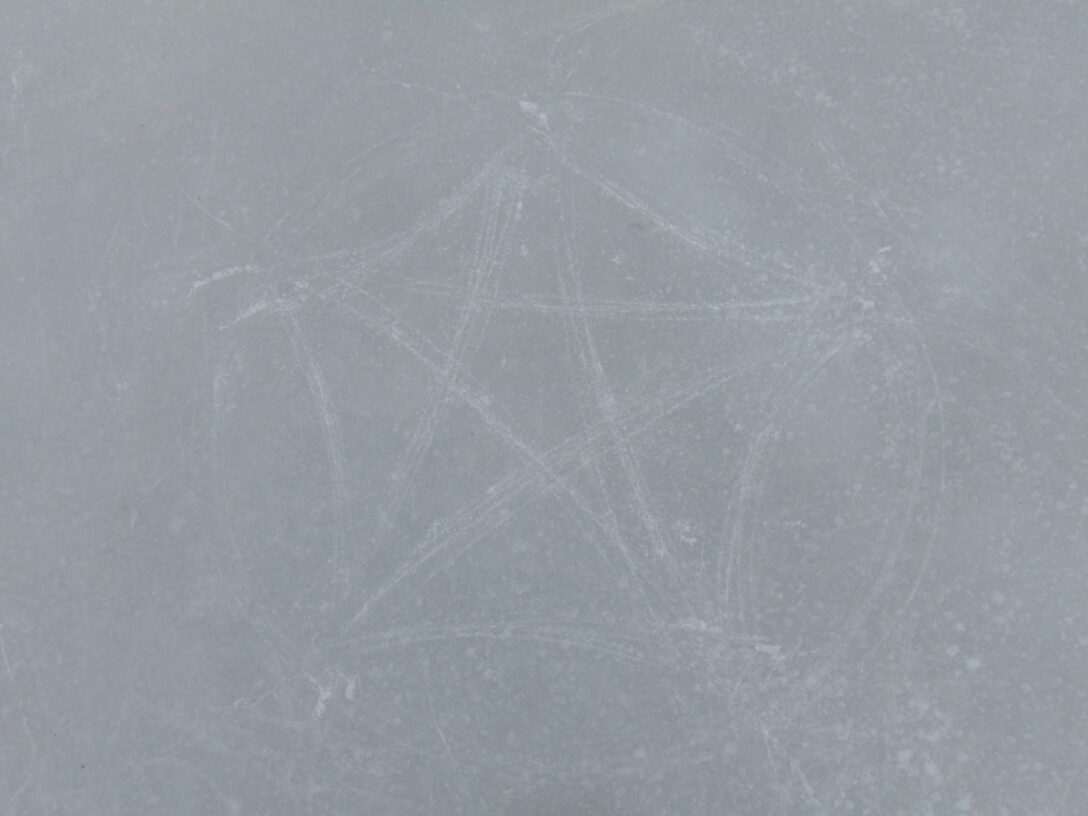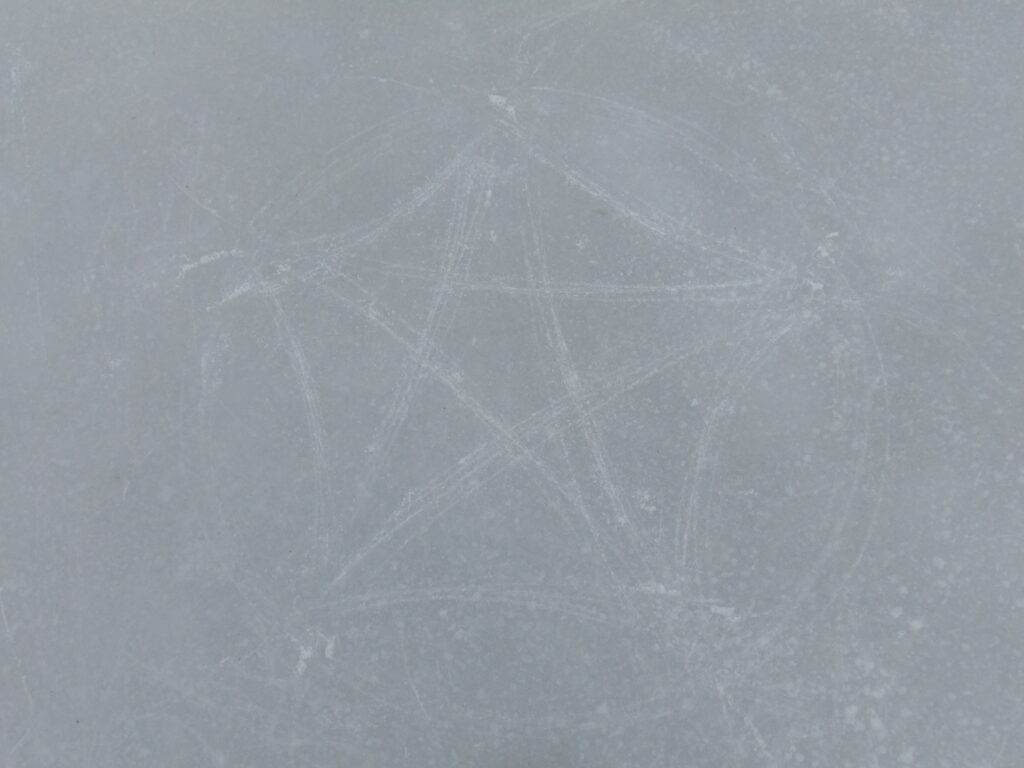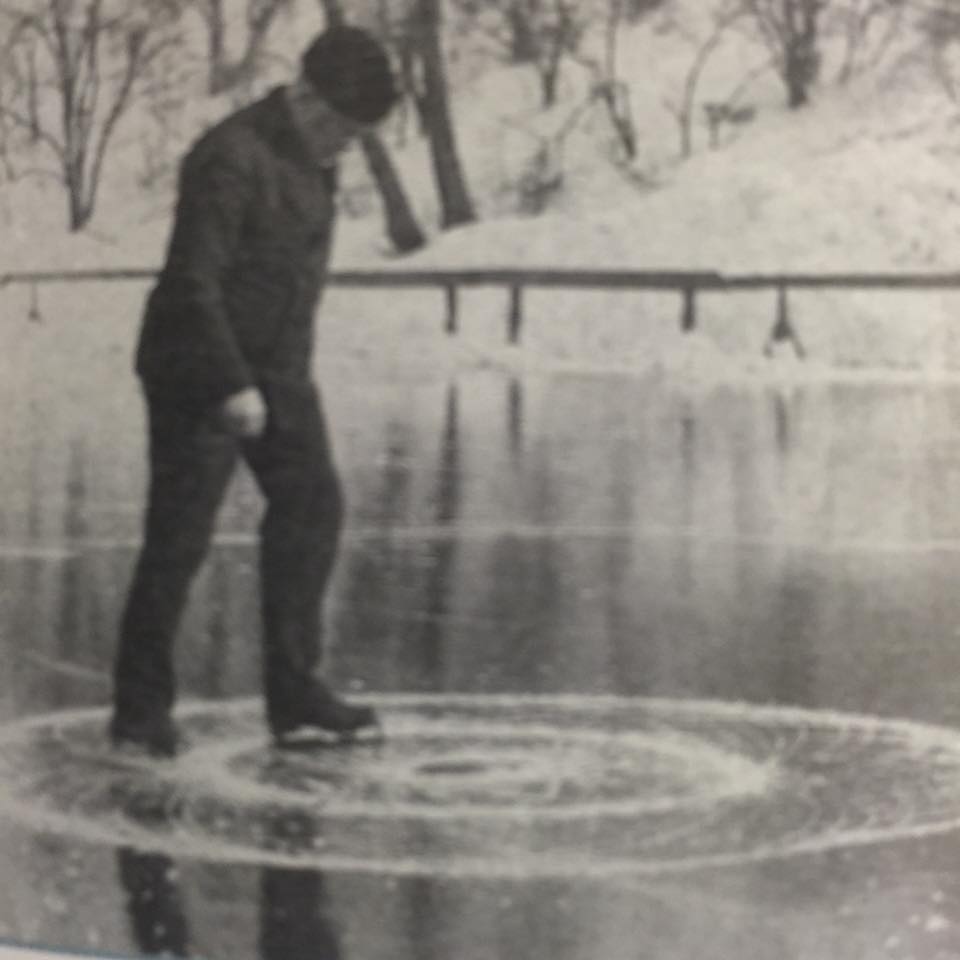The idea of designing your own figure is something that goes way back in figure skating. Late nineteenth-century competitions in the International style invited skaters to create their own patterns on the ice, called special figures. Many of these were published in books like Holletscheck’s Kunstfertigkeit im Eislaufen. Some were actually what we’d call freestyle elements today, like Axel Paulsen’s famous jump. Special figures were included in the 1908 Olympics.
An interesting survival is on the current US Figure Skating Adult Gold Figure test. The test is a sampler; the skater selects six figures from different categories:
- One forward paragraph eight
- One double three
- One bracket
- One change bracket
- One loop
- One change loop
The seventh figure is a creative figure. The compulsory figures rules (not linked here because they’re hidden behind the Members Only login screen) don’t have much to say about it—just that it’s required. Or skaters can choose to do any other figure from the test structure.
The Adult Gold Figure test seems to have come into existence at about the time figures began to be phased out of competition. It’s first mentioned on Skating‘s “Laurels” page in April 1991 (though nobody passed it then). The creative figure requirement goes back to the beginning; it’s listed in my 1992/93 Rulebook. The only change I’ve found is the deletion of TR 2.022 in 1997.
TR 2.022
To qualify for any Adult Figure Test, the candidate cannot have passed the Fourth Test or higher.
“Report of Action of the Board of Directors,” p. 29.
This may have been part of a scheme to keep figures going. Skating records the announcements of competitions held in Vail, CO in June, 1989 and in 1992, that included creative, original, new era, and team figures. It’s unclear how many people entered these events, but I suspect the number was small, because not many were offered. Creative figure events have been a staple of ISI competitions for years, and still are, though finding the details can be a bit tricky as the website says to refer to the printed Handbook.
The Adult Gold Figure Test is still on the books, though not many skaters have passed it. Digging around in the Skating Magazine Archive, I found only these 11 skaters:
- Maureen Hughes, Peninsula FSC, May 1992
- Laura Dully, The Skating Club of Boston, November 1992
- Cynthia Brett, Warwick Figure Skaters, November 1993
- Lori Nelson, St. Moritz ISC, Inc., November 1993
- Lynne Maker Kuechle, Roseville FSC, November 1993
- Pamela Medeiros, Smithfield FSC, August 1997
- Miki Marciniak, Fraser FSC, January 1998
- Elaine Livingston, Binghamton FSC, August 1998
- Margaret Szymanski, North Jersey FSC Inc., August 1999
- Dawn M Peterson, Sun Valley FSC, Inc., October 1999
- Alicia DeLalio, North Jersey FSC Inc., October 2007
(Dates refer to the issue the test was published in, which may be several months after it was passed.)
I passed it last week, so I’m on the list now too.
References
“Calendar of events.” Skating, June 1989, p. 41; May 1992, p. 21.
“Report of action of the board of directors.” Skating, August 1997, pp. 22–42.
United States Figure Skating Association, The 1992–93 Official USFSA Rulebook. Colorado Springs, CO: USFSA, 1992.







